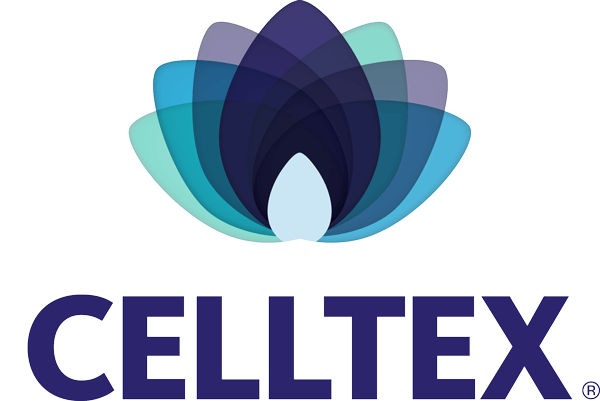Celltex News
What Is Stem Cell Banking?
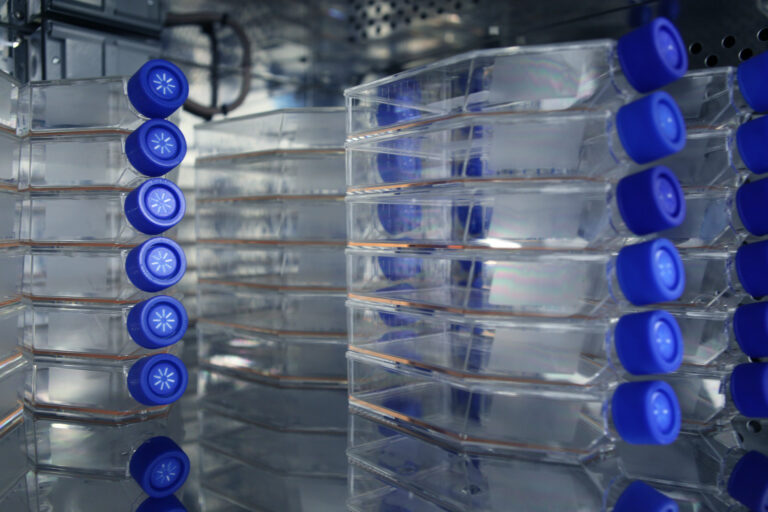
In 1992, Dr. Pablo Rubinstein established the first public stem cell bank, the National Cord Blood Program (NCBP), at the New York Blood Center with funding provided by the National Heart, Lung and Blood Institute (NHLBI) of the National Institutes of Health (NIH) [1]. The NCBP was founded to investigate the potential medical uses of cord blood with the primary goal of ascertaining if cord blood could serve as an alternate source for hematopoietic stem cell transplants for patients without matched bone marrow donors.
Thirty-two years later, the concept of stem cell banking remains largely associated with cord blood banking: stem cells extracted from a newborn’s umbilical cord (and/or placenta) are stored for future therapeutic use in case the child or a family member develops a blood-related disorder requiring HSCT therapy.
However, recent discoveries and advancements in stem cell research have broadened the scope of stem cell banking beyond this initial focus. Namely, the regenerative properties of stem cells along with their near-ubiquitous presence throughout various tissues have given rise to new therapy options for diseases and a greater variety of source material. In this article, we’ll explore the evolution of stem cell banking, focusing on these topics:
- What is Stem Cell Banking?
- Why is Stem Cell Banking Important?
- Different Types of Stem Cell Banking
- Who Should Bank Their Stem Cells?
- Who is not a Candidate for Stem Cell Banking?
- What Conditions Can Stem Cells Help With?
- What Is the Process of Stem Cell Banking?
- How Are Stem Cells Withdrawn from the Bank?
- Why Bank Your Stem Cells with Celltex Therapeutics?
Thanks to advancements in stem cell research, particularly the recognition of the regenerative properties of Mesenchymal Stem Cells (MSCs), stem cell therapy may have therapeutic potential for addressing autoimmune conditions, increasing neurological function, promoting anti-aging benefits, and more. Furthermore, the ease of extracting MSCs has significantly contributed to this expanded perspective, making Adult Stem Cell Banking a versatile and promising avenue for accessing personalized healthcare and future therapeutic interventions.
What Is Stem Cell Banking?
Simply put, stem cell banking is when your stem cells (specifically your MSCs) are isolated from your body and stored for future use.
Before stem cell banking occurs, a few steps are needed. First, a sample of tissue is extracted and sent to a laboratory for tests and eventual MSC isolation. Commonly used tissue sources for MSC isolation in adults are fat (adipose), blood, dental pulp, and bone marrow; Celltex Therapeutics exclusively uses adipose tissue as the starting material for MSC isolation (learn about the Celltex lab here).
Before any tissue sample proceeds to cell isolation, the tissue sample is tested to ensure the sample is not contaminated. Additional tests of sterility are performed routinely throughout the manufacturing process—from initial sample intake to cell isolation and cell culture procedures. Once the tissue sample passes the initial sterility tests, the MSCs are isolated from the sample and undergo another round of testing to ensure identity.
After testing confirms the viability of the MSCs, they are banked via cryopreservation, essentially freezing the adult stem cells in time for future therapeutic use. Later in this article, we’ll go into detail on Celltex’s procedures and explain how MSCs are withdrawn from the bank and cultured once stem cell therapy is needed.
Like drawing upon a savings account for emergency expenses, banking your own stem cells may provide insurance for your health and well-being.
Why Is Stem Cell Banking Important?
Although you already have stem cells in your body, the number of stem cells in most body tissues will decline as you age. Furthermore, stem cells will lose potency over time; although several factors may influence the degree of this decline.
In recent years, a theory has been put forth that the deterioration in stem cell function over time is a significant contributor to age-related diseases and disorders. Eventually, the number of stem cells in one’s body may not be enough to address chronic conditions, serious injuries, or complications that often come with aging. That’s why banking your stem cells, ideally as early as possible, is recommended.
Celltex’s process makes stem cell banking even more promising by culture-expanding one’s stem cells, allowing individuals of any age to harness their body’s natural repair and regenerative capabilities (more on this later).
Different Types of Stem Cell Banking
Adult Stem Cell Banking differs from cord blood banking in terms of tissue source (umbilical cord blood versus fat, etc.) and type of stem cell isolated. The primary stem cells isolated from umbilical cord (UC) blood are hematopoietic stem cells (HSCs). The umbilical cord HSCs have limited potency (ability to differentiate into various cell types)—they can only differentiate into different types of blood cells, such as platelets. UC blood HSCs can be used to address potential blood disorders such as sickle cell anemia or leukemia.
However, banking a newborn’s umbilical cord tissue (as opposed to blood) is another option. Whereas cord blood is rich in HSCs, cord tissue contains a large number of MSCs. Unlike HSCs, MSCs have greater potency and have the potential to differentiate into a wider variety of tissue types, such as bone, cartilage, skin, and microvasculature. The greater potency makes UC-MSCs valuable for regenerative medicine. However, this differentiation capacity is thought to account for only part of the powerful regenerative properties of MSCs (more thoughts on this below).
For most adults today, cord tissue banking wasn’t available when they were born. Fortunately, adults still have access to the regenerative potential of their own MSCs with Adult Stem Cell Banking.
Celltex’s Adult Stem Cell Banking process specifically utilizes the MSCs derived from one’s own adipose (fat) tissue.
Autologous Adipose-Derived Mesenchymal Stem Cell Banking
There are several advantages to banking your own MSCs from adipose tissue.
Firstly, autologous stem cell administration, where you receive your own stem cells, has a lower likelihood of immune rejection, which is a potential risk when receiving donated stem cells from someone else (allogeneic transplantation).
Secondly, most people can have their MSCs extracted from adipose (fat) tissue through a quick, non-invasive procedure.
In addition, with Celltex’s process, your MSCs can be stored for your entire lifetime. Once banked, a portion of your stem cell bank can be cultured into the hundreds of millions and used whenever needed. Having access to this quantity is crucial because high quantities of MSCs may be necessary to help alleviate chronic or serious health concerns. In comparison, stem cell therapies that skip the stem cell banking and culture expansion steps generally introduce only tens of thousands of MSCs.
Until recently, MSCs were most commonly extracted from bone marrow, which can be a painful procedure. Celltex’s technology works with autologous adipose-derived MSCs rather than bone marrow-derived because of several factors, including:
- It’s easier and less invasive to extract adipose tissue than bone marrow.
- The adipose extraction procedure can be safer than bone marrow extraction, according to research studies (such as this review in Stem Cells Development). [2]
- More MSCs can be found in adipose tissue than in bone marrow. [3]
- Adipose tissue contains fewer senescent MSCs (non-dividing cells that may release pro-inflammatory chemicals) than other sources of MSCs. [4], [5], [6]
- Large populations of adipose-derived MSCs can be cultured from a relatively small initial sample. [3]
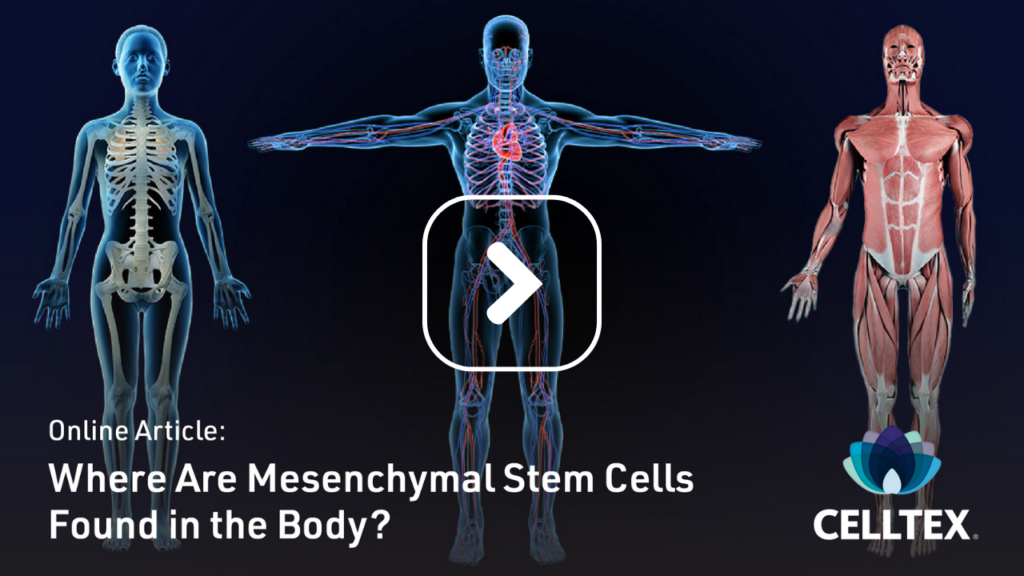
Who Should Bank Their Stem Cells?
Nearly everybody, including those of an advanced age, should bank their MSCs.
Contrary to conventional wisdom, it’s never too late to bank your own stem cells. A common misconception is that only a young person’s stem cells can offer therapeutic benefits.
However, this is not the case. Firstly, as mentioned, receiving an allogenic transplantation—even when it’s from a relative—raises a potential risk of rejection if proper tests are not conducted. Secondly, even though stem cells are affected by age, there are still living, viable MSCs in the body that can positively impact your health, even as you age. [7]
Celltex can, through the process of culture expansion, increase that number of pure and potent MSCs in the body, regardless of age. In fact, Celltex has cultured MSCs for clients who were in their nineties when they first banked.

Can You Bank Stem Cells If You Have a Disorder?
While the impact of certain conditions on one’s MSCs is still being studied, you don’t have to be in perfect health for your stem cells to be banked. With many conditions, stem cells are not impacted at a cellular level. However, many people choose to bank their stem cells before a condition develops so that if one occurs, their MSCs are already banked and ready for use.
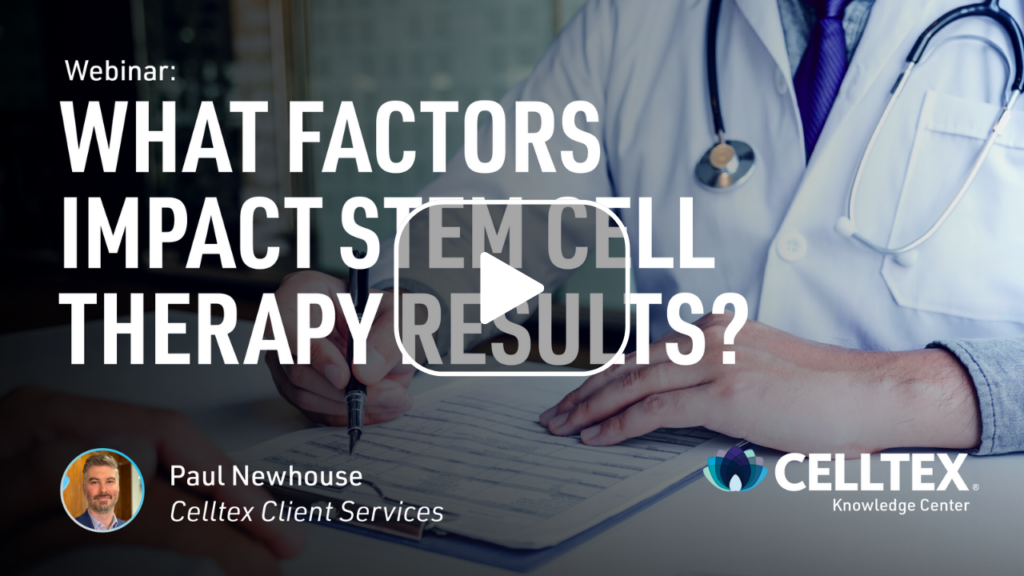
Who Is Not a Candidate for Stem Cell Banking?
Those with transmissible or communicable diseases may not be eligible. In the initial blood screening process, Celltex screens for syphilis, HIV, and Hepatitis B & C. People with these conditions, pregnant women, and those with active cancer are ineligible.
(Complete our Client Assessment Form to learn if you are a candidate for stem cell banking or therapy)
What Conditions Can Stem Cells Help With?
Stem cell banking provides access to MSCs, which have the following properties:
- They are self-renewing, allowing them to be cultured prior to therapeutic application.
- They are multipotent, meaning MSCs can differentiate into other cell types.
- They have homing properties, meaning MSCs can travel to damaged or inflamed areas of the body.
- MSCs release factors that improve the functioning of other cells in the body.
- They regulate the immune system (immunomodulation).
- They secrete antioxidants such as glutathione to fight oxidative stress.
- They release signaling molecules that promote cell survival, growth, and function.
- They can help form new blood vessels (angiogenesis), which benefits circulation.
When Celltex was founded in 2011, the assumption was that the biggest benefit of MSCs was their differentiation potential. The old thinking was that if, for example, a knee joint was arthritic and stem cells were administered, the MSCs would become healthy cartilage in the damaged joint.
However, that thinking has evolved more recently. Even without the differentiation potential, the greater therapeutic value of MSCs may instead be associated with the bioactive factors they release. It’s through these factors that MSCs help reduce inflammation, activate cells in the body that are involved in regeneration, and improve blood flow. [8]
Potential Applications of Stem Cell Therapy
Because of these properties, stem cell banking may be beneficial for those with a variety of health conditions, including autoimmune conditions such as multiple sclerosis and rheumatoid arthritis; neurological conditions such as Parkinson’s disease; joint diseases such as osteoarthritis and degenerative disc disease; respiratory conditions such as COPD and post-COVID syndrome; and surgical recovery.
When it comes to orthopedic applications such as sports injuries, having a bank of MSCs can help athletes prepare for sprains, strains, tendon & ligament tears, joint injuries, and more. A reserve of stem cells may be used to aid in the recovery process and allow athletes to return to their sport as soon as possible.
It is important to note that although MSC therapy has shown promise in the clinic, it is still a relatively new field of medicine with discoveries continuing to be made to evolve the field and increase the knowledge base. As such, there are still some unknowns regarding MSC therapy. It is not entirely clear as to which patients and what diseases/health conditions will benefit the most from MSC therapy. In other words, results may vary.

What Is the Process of Stem Cell Banking?
The process is simple. First, a qualifying blood test screens for communicable diseases. Then, provided the communicable disease test results are negative, an individual can proceed with the extraction procedure.
For adipose tissue, this is a mini liposuction with local anesthesia.
While awake, 10-20 CCs (milliliters) of adipose tissue are extracted from the area of the body around the navel or between the ribs and hips. This one-time procedure provides the tissue sample needed to create a lifetime supply of MSCs: your Foundation Bank.
After the adipose tissue extraction, the sample is overnighted to Celltex’s Current Good Manufacturing Practices (cGMP) lab in Houston for processing. Our quality control department receives the sample and performs rigorous quality and sterility tests to ensure the sample is not contaminated. Next, the samples are transferred to the cell-manufacturing clean room for processing.
It is at this point that the MSCs are isolated from the tissue sample through a validated process involving enzymatic digestion (the fat tissue is broken down into individual cells) and differential centrifugation.
The isolated MSCs are subsequently grown (cultured) in the laboratory in a tightly regulated environment. MSC growth is monitored daily to ensure the cells stay healthy and free of contaminants. During this time, the number of MSCs will multiply in culture. At various set points of this culture expansion process, the MSCs will be cryopreserved (frozen) and tested for contaminants.
The cryopreserved cells are stored in cryogenic storage tanks (partially filled with liquid nitrogen) at -300 degrees Fahrenheit, allowing them to be stored indefinitely with virtually no loss of cell viability and potency.
How Are Stem Cells Withdrawn from the Bank?
If a client decides—with the recommendation of a qualified physician—to receive stem cell therapy, some of their stored MSCs are taken from the bank and prepared for therapy.
Once thawed, the MSCs are culture expanded for 13 days. Once the cells have reached the target cell number, the MSCs are processed to remove the growth medium, enzymes, and other materials used in the culturing process. The MSCs are suspended in a sterile saline solution and undergo final quality checks, including cell counts and sterility tests before being packaged in syringes. This is the final product, which is shipped in temperature-controlled packages to the stem cell therapy administration site.
The Timeline for Celltex’s Adult Stem Cell Banking Process
The first two steps, the initial bloodwork and extraction, can occur quickly, even on the same day. Once the Celltex lab has your adipose tissue sample, it takes approximately five weeks to create your Foundation Bank. Then, once the bank is established, it takes another three weeks to culture your MSCs to a therapeutic dose in the hundreds of millions. Thus, the entire process takes approximately eight weeks from extraction to therapy (the latter of which is performed by a qualified physician).
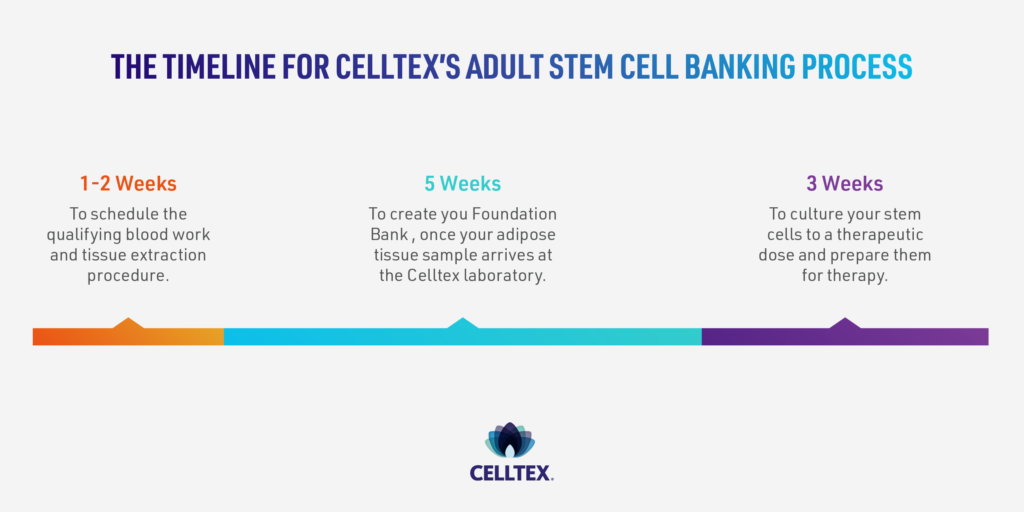
Why Bank Your MSCs With Celltex?
The purity and quality standards employed by Celltex are superior. MSCs cultured in Celltex’s cGMP lab and ISO Class 7 clean room have been used in over 10,000 therapies, all with no severe adverse events. Celltex has been an industry leader in autologous adipose-derived MSC culturing and banking since 2011.
Founded by entrepreneur David G. Eller and world-renowned spine surgeon Dr. Stanley C. Jones, Celltex Therapeutics is revolutionizing regenerative medicine.
Interested in learning more about Celltex Adult Stem Cell Banking? Request a virtual brochure, watch our educational webinars, or contact us directly.
If you’re in the Houston area, you can schedule a tour of our lab in person or tour it virtually.
References:
- Kurtzberg J. A History of Cord Blood Banking and Transplantation. Stem Cells Transl Med. 2017 May;6(5):1309-1311.
- Strioga, M., Viswanathan, S., Darinskas, A., Slaby, O., & Michalek, J. (2012). Same or not the same? Comparison of adipose tissue-derived versus bone marrow-derived mesenchymal stem and stromal cells. Stem cells and development, 21(14), 2724–2752. https://doi.org/10.1089/scd.2011.0722
- Via, A. G., Frizziero, A., & Oliva, F. (2012). Biological properties of mesenchymal Stem Cells from different sources. Muscles, ligaments and tendons journal, 2(3), 154–162.
- Hofer, H.R., Tuan, R.S. (2016). Secreted trophic factors of mesenchymal stem cells support neurovascular and musculoskeletal therapies. Stem cell research & therapy, 7(1), 131. https://doi.org/10.1186/s13287-016-0394-0
- Beane, O. S., Fonseca, V. C., Cooper, L. L., Koren, G., Darling, E. M. (2014). Impact of Aging on the Regenerative Properties of Bone Marrow-, Muscle-, and Adipose-Derived Mesenchymal Stem/Stromal Cells. PLOS One, 9(12), e115963. https://doi.org/10.1371/journal.pone.0115963
- Lv M, Zhang S, Jiang B, Cao S, Dong Y, Cao L, Guo S. Adipose-derived stem cells regulate metabolic homeostasis and delay aging by promoting mitophagy.
- Chen H, Liu O, Chen S, Zhou Y. Aging and Mesenchymal Stem Cells: Therapeutic Opportunities and Challenges in the Older Group. Gerontology. 2022;68(3):339-352.
- Han, Y., Yang, J., Fang, J., Zhou, Y., Candi, E., Wang, J., Hua, D., Shao, C., & Shi, Y. (2022). The secretion profile of mesenchymal stem cells and potential applications in treating human diseases. Signal transduction and targeted therapy, 7(1), 92. https://doi.org/10.1038/s41392-022-00932-0
Post Tags: stem cell banking
More Recent News
Exploring Regenerative Medicine Beyond Stem Cell Therapy
For many, stem cell therapy is to regenerative medicine what Google is to internet searches. Yet, there are other procedures within the regenerative medicine field that may be recommended depending on the health concern being addressed.
In this article, we explore several regenerative medicine options, including platelet-rich plasma (PRP), bone marrow aspirate concentrate (BMAC), stromal vascular fraction (SVF), and exosomes.
Read MoreWhat Makes MSCs So Promising? A Deep Dive on Mesenchymal Stem Cells
Present in the body throughout one’s lifespan, adult Mesenchymal Stem Cells (MSCs) can be used in many types of regenerative medicine. This article explores how MSCs work in the body and what makes them suitable for therapeutic application.
Read More
